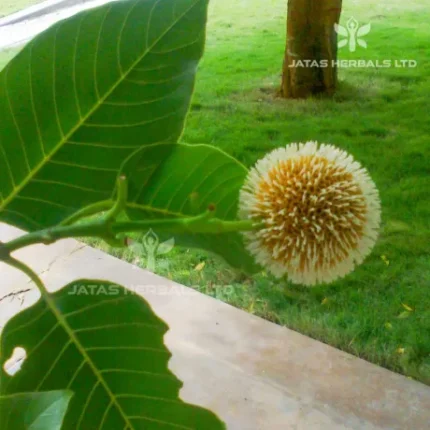Adhaki is found in the list of simbi dhanya (pulses) in all the Ayurveda texts. Vagbhata quoted it as tuvari (A.H.Su.29/34 & Ci.19/25). This plant is native to India, brought millennia ago to Africa and to other parts of the globe in post-Columbian times. Though persists in several forest places, truly wild Cajanus has never been found; it exists mostly as remnants of cultivations. The closest wild relative, Atylosia cajanifolia Haines, has been found in some localities in East India. Most other Atylosias are found scattered throughout India, while in North Australia a group of endemic Atylosia species grow. In Africa Cajanus kerstingii grows in the drier belts of Senegal, Ghana, Togo, and Nigeria. Pigeon peas occur throughout the tropical and subtropical regions, as well as the warmer temperate regions (as North Carolina) – (Duke, 1981a).
Botanical description – Perennial woody shrub, mostly grown as an annual for the legume; stems strong, woody, to 4 m tall, freely branching; root system deep and extensive, to about 2 m, with a taproot. Leaves alternate, pinnately trifoliolate, stipulate; stipels small, subulate; leaflets lanceolate to elliptic, entire, acute apically and basally, penninerved, resinous on lower surface and pubescent, to 15 cm long and 6 cm wide. Inflorescence in terminal or axillary racemes in the upper branches of the bush. Flowers multi-colored with yellow predominant, red, purple, orange occur in streaks or fully cover the dorsal side of the flag, zygomorphic. Pods compressed, 2–9-seeded, not shattering in the field. Seeds lenticular to ovoid, to 8 mm in diameter, about 10 seeds per gram, separated from each other in the pod by slight depressions. Germination cryptocotylar (Duke, 1981a).
Part used – seeds
Uses – Pigeon peas are popular food in developing tropical countries. Nutritious and wholesome, the green seeds (and pods) serve as vegetable. Ripe seeds are a source of flour, used split (dhal) in soups or eaten with rice. Dhal contains as much as 22% protein, depending on cv and location. Ripe seeds may be germinated and eaten as sprouts. Plants produce forage quickly and can be used as a perennial forage crop or used for green manure. Often grown as a shade crop for tree crops or vanilla, a cover crop, or occasionally as a windbreak hedge. In Thailand and N. Bengal, pigeon pea serves as host for the scale insect which produces lac or sticklac. In Malagasy the leaves are used as food for the silkworm. Dried stalks serve for fuel, thatch and basketry – (Duke, 1981a).
Folk Medicine – In India and Java, the young leaves are applied to sores. Indochinese claim that powdered leaves help expel bladderstones. Salted leaf juice is taken for jaundice. In Argentina the leaf decoction is prized for genital and other skin irritations, especially in females. Floral decoctions are used for bronchitis, coughs, and pneumonia. Chinese shops sell dried roots as an alexeritic, anthelminthic, expectorant, sedative, and vulnerary (Morton, 1976). Leaves are also used for toothache, mouthwash, sore gums, child-delivery, dysentery. Scorched seed, added to coffee, are said to alleviate headache and vertigo. Fresh seeds are said to help incontinence of urine in males, while immature fruits are believed of use in liver and kidney ailments. (Duke, 1981a).
Chemical constituents – Analysis of dhal (without husk) gave the following values: moisture, 15.2; protein, 22.3; fat (ether extract), 1.7; mineral matter, 3.6; carbohydrate, 57.2; Ca, 9.1; and P, 0.26%; carotene evaluated as vitamin A, 220 IU and vitamin B1, 150 IU per 100 g.
Sun-dried seeds of Cajanus cajan are reported to contain (per 100 g) 345 calories, 9.9% moisture, 19.5 g protein, 1.3 g fat, 65.5 g carbohydrate, 1.3 g fiber, 3.8 g ash, 161 mg Ca, 285 mg P, 15.0 mg Fe 55, µg β-carotene equivalent, 0.72 mg thiamine, 0.14 mg riboflavin, and 2.9 mg niacin.






Reviews
There are no reviews yet.